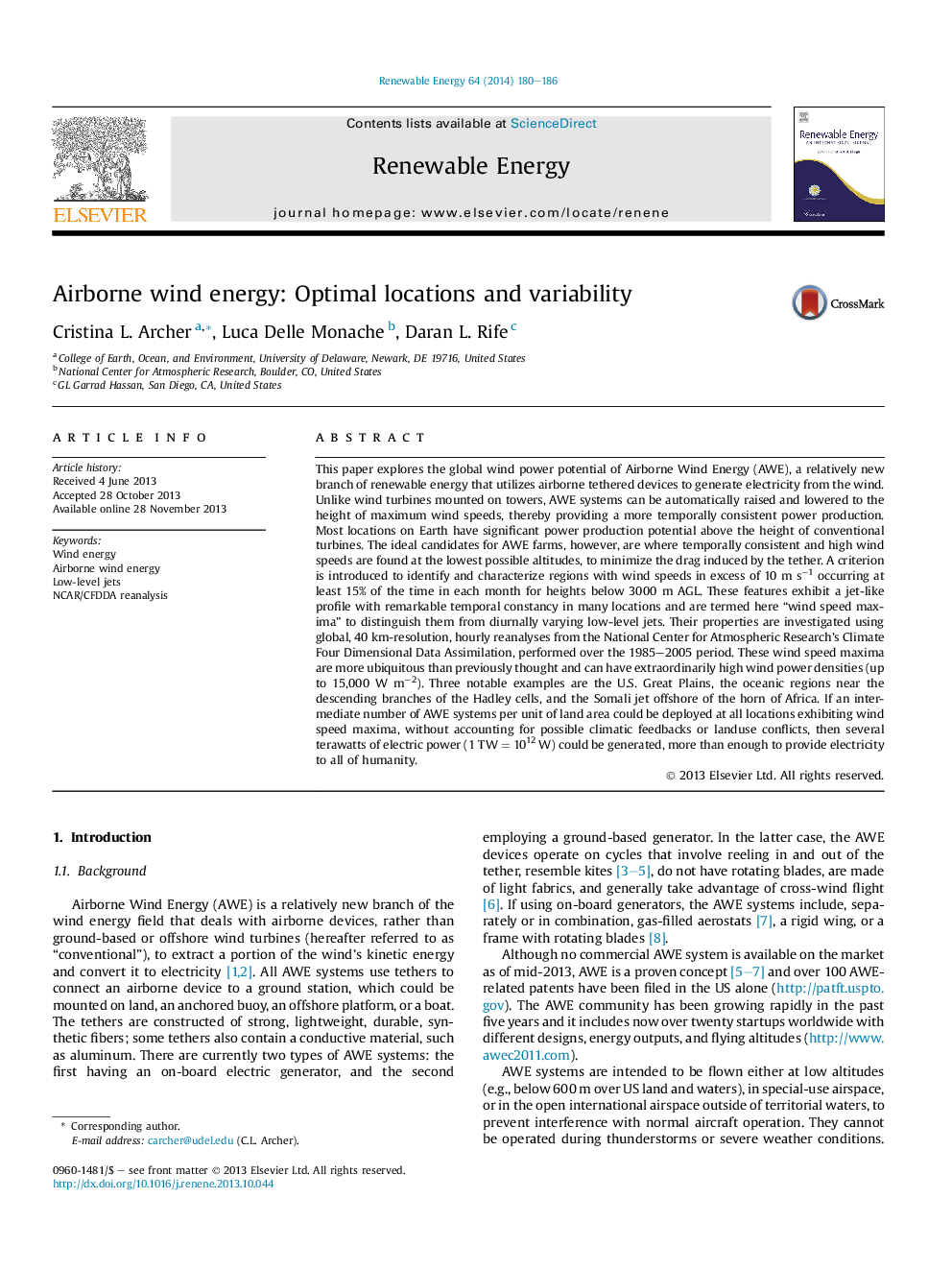| کد مقاله | کد نشریه | سال انتشار | مقاله انگلیسی | نسخه تمام متن |
|---|---|---|---|---|
| 300088 | 512469 | 2014 | 7 صفحه PDF | دانلود رایگان |
• Optimal locations for airborne wind energy are identified globally.
• These locations have frequent jet-like wind profiles in low troposphere.
• High-resolution, 21-year reanalysis by NCAR was used.
• Global wind potential of airborne wind energy is large.
This paper explores the global wind power potential of Airborne Wind Energy (AWE), a relatively new branch of renewable energy that utilizes airborne tethered devices to generate electricity from the wind. Unlike wind turbines mounted on towers, AWE systems can be automatically raised and lowered to the height of maximum wind speeds, thereby providing a more temporally consistent power production. Most locations on Earth have significant power production potential above the height of conventional turbines. The ideal candidates for AWE farms, however, are where temporally consistent and high wind speeds are found at the lowest possible altitudes, to minimize the drag induced by the tether. A criterion is introduced to identify and characterize regions with wind speeds in excess of 10 m s−1 occurring at least 15% of the time in each month for heights below 3000 m AGL. These features exhibit a jet-like profile with remarkable temporal constancy in many locations and are termed here “wind speed maxima” to distinguish them from diurnally varying low-level jets. Their properties are investigated using global, 40 km-resolution, hourly reanalyses from the National Center for Atmospheric Research's Climate Four Dimensional Data Assimilation, performed over the 1985–2005 period. These wind speed maxima are more ubiquitous than previously thought and can have extraordinarily high wind power densities (up to 15,000 W m−2). Three notable examples are the U.S. Great Plains, the oceanic regions near the descending branches of the Hadley cells, and the Somali jet offshore of the horn of Africa. If an intermediate number of AWE systems per unit of land area could be deployed at all locations exhibiting wind speed maxima, without accounting for possible climatic feedbacks or landuse conflicts, then several terawatts of electric power (1 TW = 1012 W) could be generated, more than enough to provide electricity to all of humanity.
Journal: Renewable Energy - Volume 64, April 2014, Pages 180–186
